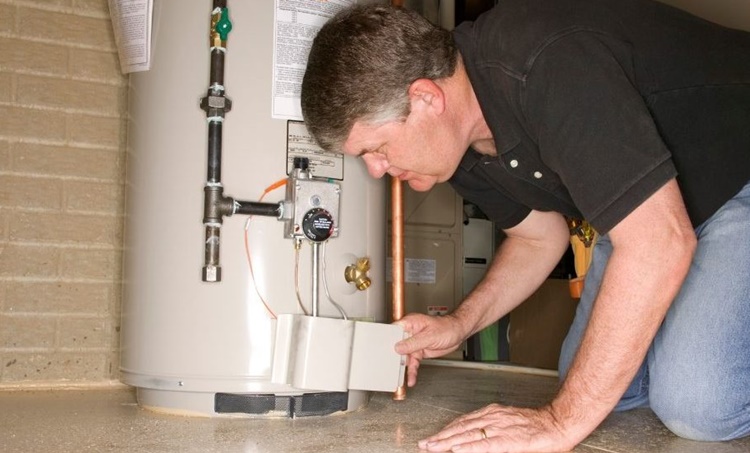What're your thoughts about How to Maintain Your Water Heater & Prolong its Life?

Warm water is important for daily comfort, whether it's for a refreshing shower or cleaning recipes. To guarantee your warm water system runs efficiently and lasts longer, regular upkeep is vital. This short article gives useful pointers and insights on how to keep your home's hot water system to avoid disturbances and expensive repair work.
Intro
Maintaining your home's warm water system might appear daunting, yet with a few simple steps, you can guarantee it operates efficiently for years ahead. This overview covers everything from recognizing your hot water system to DIY upkeep suggestions and recognizing when to employ professional aid.
Importance of Preserving Your Warm Water System
Regular upkeep not only expands the life expectancy of your hot water system yet also guarantees it runs successfully. Neglecting maintenance can cause reduced efficiency, greater energy bills, and even early failure of the system.
Indications Your Warm Water System Requirements Maintenance
Understanding when your warm water system needs interest can avoid significant issues. Watch out for indicators such as irregular water temperature, weird noises from the heating system, or rustic water.
Comprehending Your Warm Water System
Prior to diving into maintenance tasks, it's valuable to recognize the basic elements of your warm water system. Typically, this includes the water heater itself, pipelines, anode rods, and temperature level controls.
Regular Monthly Upkeep Tasks
Normal monthly checks can help catch minor concerns prior to they rise.
Flushing the Hot Water Heater
Flushing your hot water heater eliminates sediment build-up, enhancing effectiveness and extending its life.
Monitoring and Changing Anode Rods
Anode rods protect against deterioration inside the tank. Inspecting and changing them when worn out is important.
Examining and Readjusting Temperature Setups
Adjusting the temperature level settings ensures optimal performance and safety.
DIY Tips for Maintenance
You can perform a number of upkeep tasks yourself to keep your hot water system in leading problem.
Looking for Leaks
Routinely check pipelines and links for leakages, as these can lead to water damage and higher bills.
Testing Stress Alleviation Valves
Checking the pressure relief valve ensures it works correctly and avoids too much pressure build-up.
Insulating Pipes
Insulating hot water pipes decreases warm loss and can save power.
When to Call an Expert
While DIY maintenance is beneficial, some problems need expert proficiency.
Complex Issues Needing Specialist Assistance
Examples include major leaks, electrical issues, or if your hot water heater is constantly underperforming.
Regular Specialist Upkeep Advantages
Specialist maintenance can consist of detailed inspections, tune-ups, and guaranteeing compliance with security standards.
Final thought
Regular upkeep of your home's hot water system is necessary for effectiveness, durability, and price financial savings. By adhering to these tips and recognizing when to look for expert assistance, you can make sure a dependable supply of warm water without unforeseen disturbances.
How to Maintain an Instant Hot Water Heater
Before tinkering with your hot water heater, make sure that it’s not powered on. You also have to turn off the main circuit breaker and shut off the main gas line to prevent accidents. Also turn off the water valves connected to your unit to prevent water from flowing into and out of the appliance. 2. When you’re done, you have to detach the purge valves’ caps. These look like the letter “T†and are situated on either side of the water valves. Doing so will release any pressure that has accumulated inside the valves while at the same time avoid hot water from shooting out and burning your skin. 3. When the purge valves’ caps are removed, you have to connect your hosing lines to the valves. Your unit should have come with three hoses but if it didn’t, you can purchase these things from any hardware or home repair shops. You can also get them from retail stores that sell water heating systems. Read the user’s manual and follow it to complete this task properly. When the hosing lines are connected, open the purge port’s valves. 4. You should never use harsh chemical cleaners or solutions when cleaning your unit. Make use of white vinegar instead. It should be undiluted and you’ll probably use about 2 gallons. 5. Now flush your water heater. This task should probably take about 40 minutes. We can’t give you specific directions for this because the procedure is carried out depending on the type, model and brand of your heater. With that being said, refer to the user’s manual. 6. When you’re done draining the unit, you have to turn off the purge port valves again. Remove the hosing lines that you earlier installed on each of the water valves. Put the valve caps (purge port) back in their respective places and be very careful so as not to damage the rubber discs that are found inside these caps. 7. Now that everything’s back in place, check your user’s manual again to find out how to reactivate your water heating system. 8. Once it is working, turn one of your hot water faucets on just to let air pass through the heater’s water supply pipes. Leave the tap on until water flows smoothly out of it. https://www.orrplumbing.com/blog/2014/september/how-to-maintain-an-instant-hot-water-heater/

I came across that article on Tips For Maintaining Your Hot Water Heater when browsing on the web. Sharing is good. Helping others is fun. We truly appreciate reading our article about How to Maintain Your Water Heater & Prolong its Life.
Visit Site